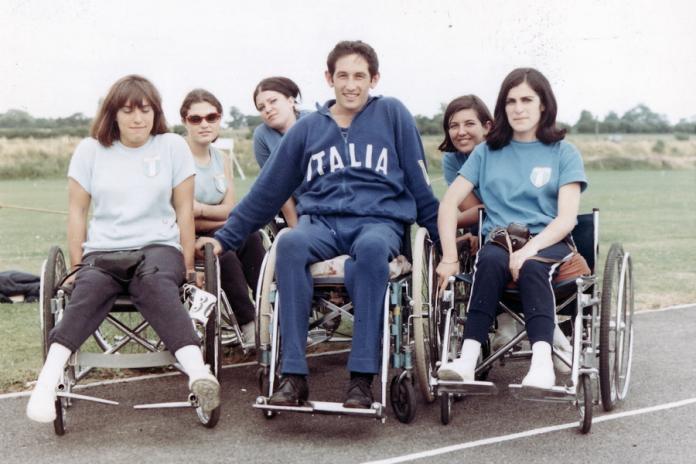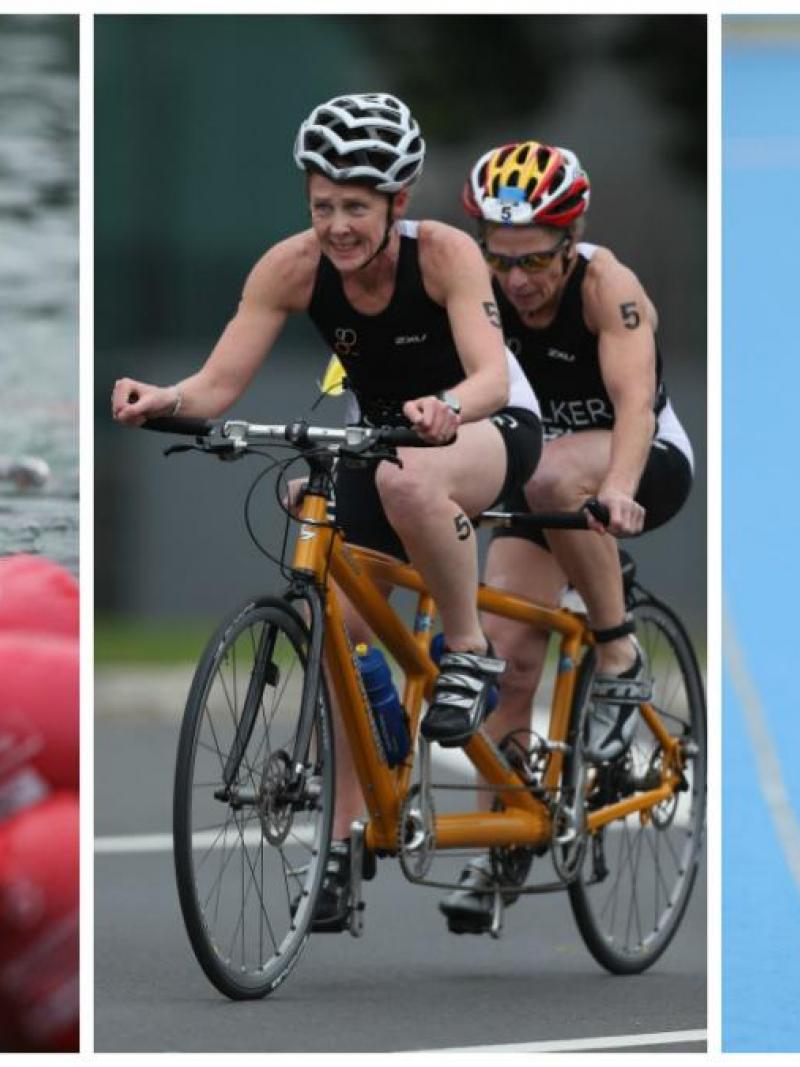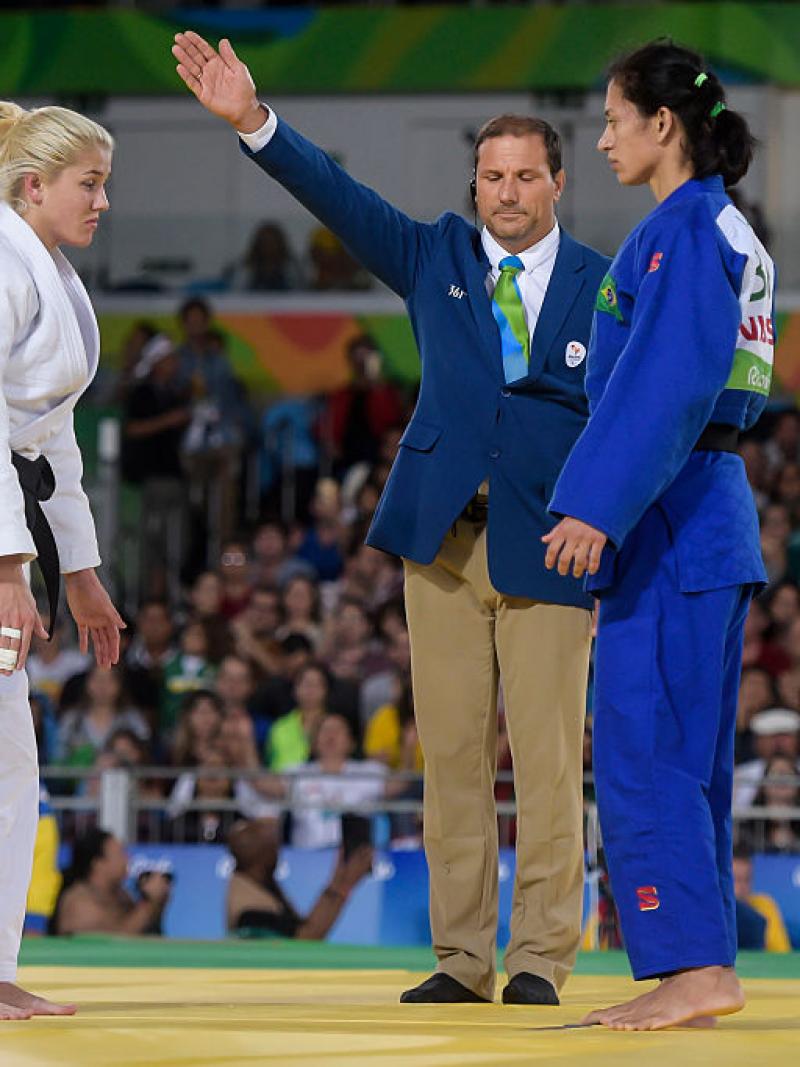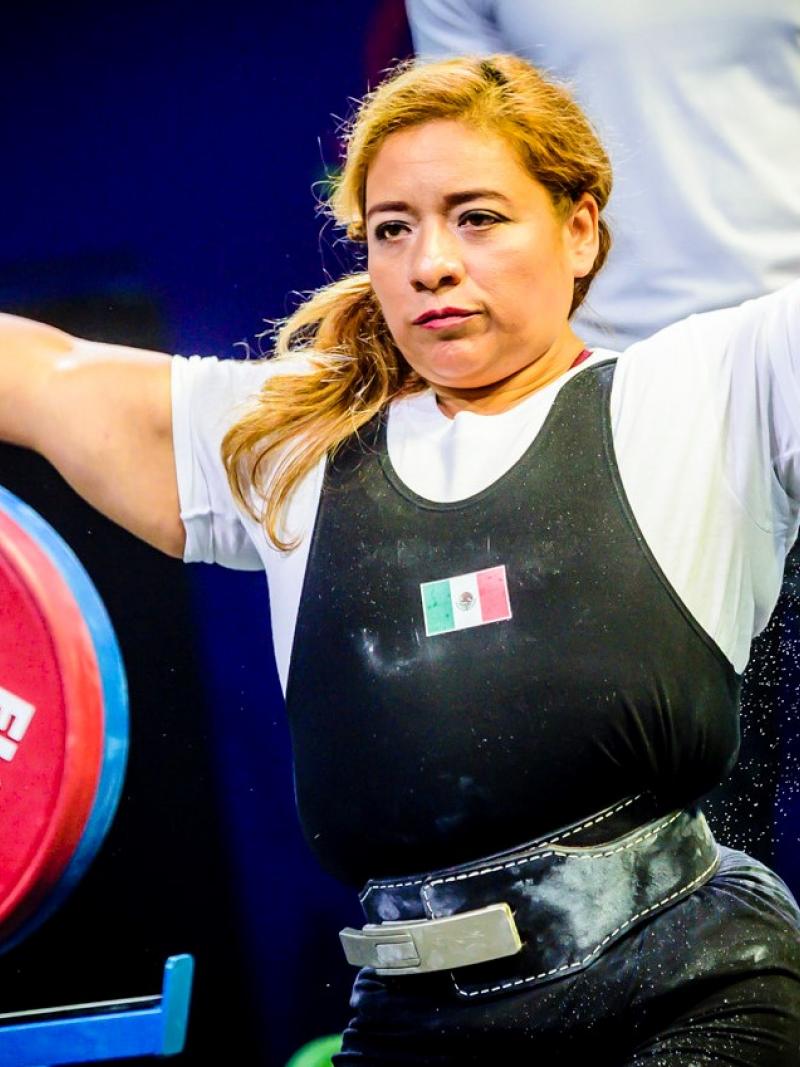Sport Week: 10 things to know about wheelchair fencing
The sport adapted by Sir Ludwig Guttmann more than 65 years ago continues to evolve 22 Jul 2021
The Tokyo 2020 wheelchair fencing competition will take place over five days at the Makuhari Messe Hall B and feature individual and team events. Find out more about one of the original Paralympic sports.
1. The object of fencing is to score 'hits' or 'touches' on your opponent. A given number of hits (usually from five to 15) make up a 'bout', and the first player to score that number wins the bout. Because it is such a fast-moving sport, touches are recorded electronically by body wires, and announced by a coloured light on the side of the fencer who made the touch. The three weapons used in the sport of fencing are the sabre, epee and foil.
2. Wheelchair fencing was pioneered by Sir Ludwig Guttmann, the father of the Paralympic Movement. A keen fencer himself, Guttmann saw the sport’s potential early on for helping rehabilitate people with spinal injuries. Wheelchair fencers have always competed from a stationary position, rather than moving up and down the piste.
3. The sport was introduced as a demonstration event to the International Stoke Mandeville Games, the forerunner of the Paralympic Games, by Guttmann at the Stoke Mandeville Hospital in 1954. A year later it was officially added to the programme, debuting with a sabre event for men on the outdoor netball pitch. Over the next decade, women’s events and foil and epee were added.
4. Wheelchair fencing was one of eight sports to be featured at the first official Paralympic Games, in Rome, Italy, in 1960. Nine Italian wheelchair fencers – six men and three women – competed. An athlete listed only as ‘Tedone’ in official records from the time won the men’s sabre and Anna Maria Toso claimed gold in the women’s foil. Giovanni Ferraris and ‘Tedone’ won the third title on offer – the men’s team sabre.
5. In these formative days, equipment for wheelchair fencing was evolving at the same time as the sport itself. At the beginning, athletes used heavy wheelchairs known as ‘Travaux Chairs’. And in the absence of a way to keep the chairs in place during the cut and thrust of a match, officials used to have to hold the wheels so they did not topple over. There was also no way to ensure the distance between fencers was consistent, although the development of a ‘frame’ to both keep chairs in position and achieve this was advancing quickly.
6. It was the Italians who in 1987 invented a frame which formed the basis for the several versions that are still being used today. Minor adjustments included the consideration of lightness of equipment and the facility to more quickly accommodate both left and right handed fencers. Modern frames also allow for the space between fencers to be modified, depending on the fencer with the shorter arm.
7. By the mid-1990s, the current classification system of category A and B was introduced. Classification aims to ensure a level-playing field by ensuring an athlete is placed in a category according to how their impairment impacts their sport performance.
8. Tokyo 2020 will see the addition of the women’s sabre category A and B, bringing the number of medal events to 16 across men’s and women’s individual and team foil (photo), epee and sabre.
9. Fans of able-bodied fencing may notice some differences in the rules in wheelchair fencing. For example, movement prior to the referee’s ‘Allez’ leads to an immediate penalty. The Rules, classification and the competition schedule is overseen by the International Wheelchair and Amputee Sports Federation (IWAS) Wheelchair Fencing, the governing body of the sport.
10. No wheelchair fencer has won more medals than Italy’s Roberto Marson. The Italian won his first medal at Tokyo 1964 and went on to win 15 in total. France however top the all-time medals table with 134 top three finishes, 61 of them golden.
 Facebook
Facebook
 Instagram
Instagram
 Twitter
Twitter
 Youtube
Youtube















